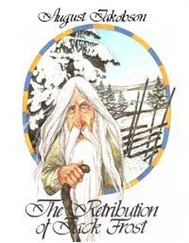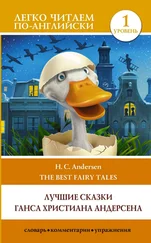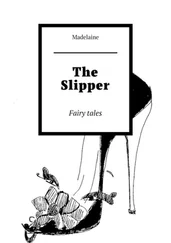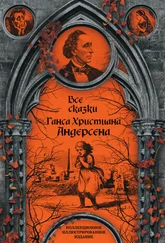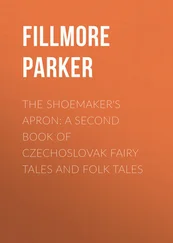Ганс Андерсен - Fairy Tales
Здесь есть возможность читать онлайн «Ганс Андерсен - Fairy Tales» весь текст электронной книги совершенно бесплатно (целиком полную версию без сокращений). В некоторых случаях можно слушать аудио, скачать через торрент в формате fb2 и присутствует краткое содержание. Жанр: Старинная литература, на английском языке. Описание произведения, (предисловие) а так же отзывы посетителей доступны на портале библиотеки ЛибКат.
- Название:Fairy Tales
- Автор:
- Жанр:
- Год:неизвестен
- ISBN:нет данных
- Рейтинг книги:4 / 5. Голосов: 1
-
Избранное:Добавить в избранное
- Отзывы:
-
Ваша оценка:
- 80
- 1
- 2
- 3
- 4
- 5
Fairy Tales: краткое содержание, описание и аннотация
Предлагаем к чтению аннотацию, описание, краткое содержание или предисловие (зависит от того, что написал сам автор книги «Fairy Tales»). Если вы не нашли необходимую информацию о книге — напишите в комментариях, мы постараемся отыскать её.
Fairy Tales — читать онлайн бесплатно полную книгу (весь текст) целиком
Ниже представлен текст книги, разбитый по страницам. Система сохранения места последней прочитанной страницы, позволяет с удобством читать онлайн бесплатно книгу «Fairy Tales», без необходимости каждый раз заново искать на чём Вы остановились. Поставьте закладку, и сможете в любой момент перейти на страницу, на которой закончили чтение.
Интервал:
Закладка:
That was what the minister’s son said. It was somewhat long, but in the meantime the whistle had been whittled.
They were having a big party at the manor. Many guests had come from the surrounding area and from the capital. Some women were dressed tastefully, and others without taste. The big hall was full of people. The local ministers were standing respectfully in a group in a corner. It looked a little like a funeral, but it was entertainment, although it hadn’t really started yet.
There was going to be a big concert, and that’s why the little baron brought his willow flute along, but he couldn’t get a peep out of it. His pappa couldn’t either, so it wasn’t any good.
There was music and singing of the kind that is most fun for those who perform it, but lovely, by the way.
“You’re a virtuoso,” said a young cavalier, who was like his parents, to the young tutor. “You play the flute, even carve it yourself. Genius is certainly ruling here—sitting on the right hand side—God bless us! I keep up with the times, you have to do that. Won’t you please us all by playing your little instrument?” and he handed him the little willow flute that was carved from the willow tree down by the moat. Loudly and clearly he announced that the tutor was going to play a flute solo.
It was easy to see that he was making fun of the tutor, who didn’t want to play although he certainly could, but they insisted and pressed him, and so he took the flute and set it to his lips.
It was a strange flute! They heard a tone that was as persevering as what you hear from a steam locomotive, but even louder. It could be heard all over the estate, the garden, and the woods and for miles around the countryside, and with the sound came a stormy wind that roared, “Everything in its proper place.” And then Pappa, the Baron, was carried by the wind out of the manor house and right down into the cottage where the man lived who tended the cows. And the cattleman flew up—not to the great hall, he didn’t belong there—but up to the servants’ quarters among the finest servants who wore silk stockings. And those proud fellows were struck numb to think that such an inferior person dared sit at the table with them.
But in the great hall the young Baroness flew up to the head of the main table, where her place was, and the minister’s son sat beside her. They sat there together as if they were a bridal couple. An old count who belonged to one of the oldest families in the land remained in his place of honor because the flute played fair, as one should. The witty cavalier who was responsible for the flute playing, and who was like his parents, flew head-first into the henhouse, but he was not alone.
The flute could be heard for miles, and odd things happened. A rich merchant and his family, driving in a four-horse carriage, were blown completely out of the carriage and couldn’t even find a place on the back. Two rich farmers, who recently had grown too big for their own cornfields, were blown down into a muddy ditch. It was a dangerous flute. Fortunately it cracked with the first tone, and that was a good thing. It went back in the young man’s pocket: “Everything in its proper place!”
The next day nobody talked about what had happened, and that’s why we have a saying—“Stick a pipe in it.” Everything was once again where it was before except for the two old portraits of the peddler and the goose girl. They had been blown up to the wall in the great hall, and when someone who was an art expert said that they were painted by a master, they were repaired and remained hanging there. No one knew before that they were any good, and how would you know that? Now they hung in a place of honor. “Everything in its proper place” and eventually that’s where everything ends up. Eternity is long—longer than this story.
NOTES
1 In Greek tradition, the sixth-century inventor of tragedy; little is known of his life and work.
Commentaries on the Tales

The dates given below are those of first publication. Andersen first published several of his tales in periodicals, then collected them in book form, sometimes a year or more after they had originally appeared.
THE ARTIST AND SOCIETY
THE NIGHTINGALE (NATTERGALEN, 1844)
As a young boy, Andersen had a sweet voice and was called “the little nightingale of Fyn,” a reference to the island on which Odense was located. Clearly, in his story Andersen identified with the nightingale, which is depicted as his ideal model of the artist, who must determine his “authentic” role within a system of patronage. Andersen also associated the little bird with Swedish singer Jenny Lind, famous because of her exquisite voice and known as the “Swedish Nightingale.” Andersen first heard Jenny Lind sing in the fall of 1844 and fell in love with her.
In European folklore and literary tradition the nightingale, a tiny bird, has been related to Philomela, a figure in Greek mythology; after her brother-in-law raped her and then cut out her tongue, the gods turned Philomela into a nightingale. In medieval literature the nightingale is depicted as a fearful creature, afraid of snakes, that presses a thorn against her breast to keep herself awake at night and therefore utters a mournful song. Andersen’s nightingale is a not a female and is not mournful. His bird is more like a bird of spring that rejuvenates the emperor.
Andersen had been fascinated by China since his childhood and was also interested in mechanical inventions. In the Tivoli Gardens, which opened on August 15, 1843, in Copenhagen, several “Chinese” edifices reflected popular interest in the Orient. Andersen’s visit to Tivoli soon after it was opened may have influenced him to write what he called his “Chinese fairy tale.”
THE GARDENER AND THE GENTRY (GARTNEREN OG HERSKABET, 1872)
Written at the end of Andersen’s life, this tale reflects his disappointment about the reception of his works by the Danish aristocracy, despite his fame. The artist as a magnificent gardener is an apt metaphor for Andersen’s conception of himself as an innovative cultivator of Danish folklore. The tale was immediately translated into English as “The Gardener and the Noble Family” and published in Scribner’s Monthly (August 1872) .
THE FLYING TRUNK (DEN FLYVENDE KUFFERT, 1839)
The source for this tale is “Malek and Princess Schirina,” in French Orientalist Petis de la Croix’s Mille et un jours (The Thousand and One Days, 1710), a collection of tales allegedly based on a Persian original called Hazar Yek Ruz. Very popular in the eighteenth and nineteenth centuries, Mille et un jours was translated from French into English and German, and into Danish in 1759. In Andersen’s tale Malek is the son of a rich merchant who buys a mechanical coffer that flies through the air. After he wastes away his inheritance, he flies off to a foreign realm called Gazna, ruled by King Bahaman, and, pretending to be the Prophet Mahomet, marries the Princess Schirina. At one point Malek even protects the realm of Gazna from invasion by a neighboring king. However, his flying coffer catches fire; once it is destroyed, Malek leaves Gazna and becomes a weaver in Cairo, thus fulfilling a prophecy that the princess would one day be betrayed by a man.
To a certain extent, Andersen’s story is similar to many Oriental tales featuring flying carpets or horses. The traditional tale begins with a son of a rich merchant spending his inheritance foolishly and being abandoned by his friends, then stumbling upon some lucky charm. In Andersen’s tale, the trunk (which in the Arabic tales can be a carpet, lamp, horse, or some other helper) enables him to regain his former social status and enjoy a brief period of pleasure. However, since he does not take care of his lucky object, he fails to attain complete happiness in the end. Andersen introduced the motif of the hero as storyteller who must tell a moral, refined, and amusing tale. Ironically, the tale parallels the fortune of the merchant’s son and exposes his major foible: pride. Embedded in Andersen’s story is a notion that good tales can expose even the storyteller.
Читать дальшеИнтервал:
Закладка:
Похожие книги на «Fairy Tales»
Представляем Вашему вниманию похожие книги на «Fairy Tales» списком для выбора. Мы отобрали схожую по названию и смыслу литературу в надежде предоставить читателям больше вариантов отыскать новые, интересные, ещё непрочитанные произведения.
Обсуждение, отзывы о книге «Fairy Tales» и просто собственные мнения читателей. Оставьте ваши комментарии, напишите, что Вы думаете о произведении, его смысле или главных героях. Укажите что конкретно понравилось, а что нет, и почему Вы так считаете.

![Ганс Андерсен - Ганс Чурбан[другой перевод]](/books/95480/gans-andersen-gans-churban-drugoj-perevod-thumb.webp)

